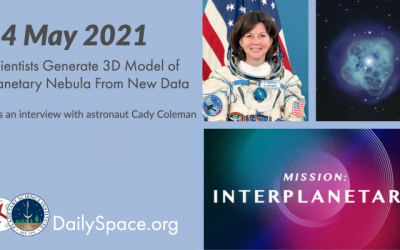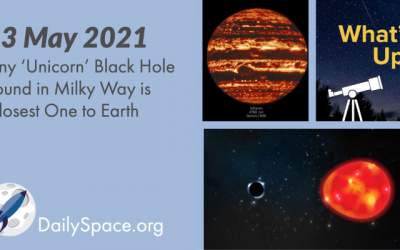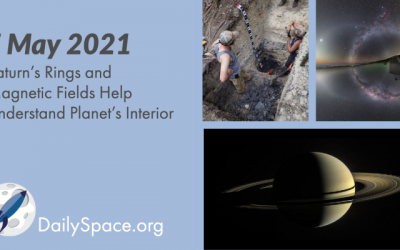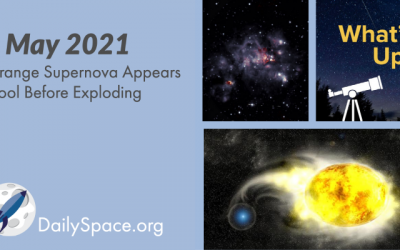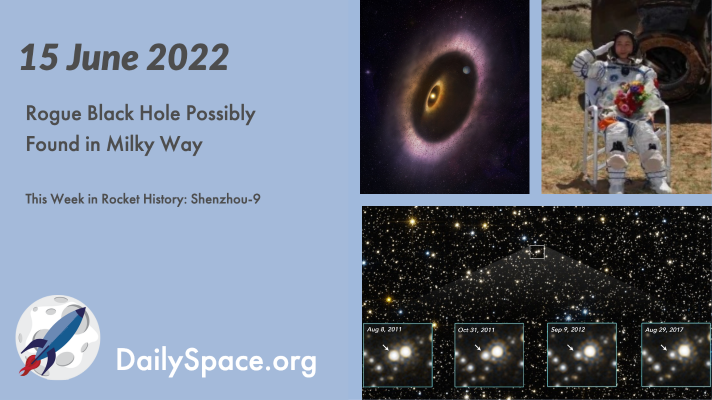
Rogue Black Hole Possibly Found in Milky Way
After six years of Hubble Space Telescope observations and the hypothesis that millions of black holes exist in the Milky Way, scientists have finally found direct evidence for the existence of one such black hole. Plus, planetary formation, a wandering star, and this week in rocket history, we look back at China’s first crewed space station docking.
Catch us on NowMedia TV
Saturday 11pm Central / midnight Eastern
Sunday 10pm Central / 11pm Eastern
Watch live on these stations: Houston 21.10, Atlanta 22.10
or tune-in on Apple TV, Roku, YouTube Live, or Amazon Prime
Scientists Generate 3D Model of Planetary Nebula From New Data
Using spectrographic data from several different telescopes, a team put together a three-dimensional model of planetary nebula NGC 1514, which allowed them to further study the shape and internal motion of the object. Plus, Antarctic sea ice, a history of current flow, magnetic waves, and an interview with astronaut Cady Coleman.
Tiny ‘Unicorn’ Black Hole Found in Milky Way is Closest One to Earth
A tiny black hole, only three solar masses, has been found inside the Milky Way in the constellation Monoceros. One of the smallest black holes ever found, it is also the closest one to Earth. Plus, Perseverance, Gaia, a brown dwarf, new images of Jupiter, seismic monitoring from space, and this week’s What’s Up.
Rocket Roundup for May 12, 2021
This week we present more Starlink launches, another Chinese launch, the test launch and landing of SN15, and the re-entry of the Long March 5B core stage that failed its deorbit burn last week. Plus, this week in rocket history, we look back at the launch of Alan Shepard and Freedom 7 on May 5th, 1961.
Discovery of Twin Supernovae Could Open Up Dark Energy Experiments
Researchers found that among about 50 supernovae, many had nearly identical spectra, paving the way for making more accurate distance calculations. These calculations, in turn, open up the possibility of using supernovae to better search for dark energy. Plus, OSIRIS-REx, Voyager I, planetary formation, and volcanoes on Mars.
Saturn’s Rings and Magnetic Fields Help Understand Planet’s Interior
Two new studies used data from Cassini’s Grand Finale observations of Saturn and found that the magnetic fields and a wave in the rings provide insight into the core structure and composition of the gas giant. Plus, cosmic rays, how Mayans shaped the Earth, and a review of books by Charles C. Mann.
Strange Supernova Appears Cool Before Exploding
Researchers find that the “oddball supernova” of a curiously cool, yellow star was lacking the hydrogen content expected, “stretching what is physically possible.” Plus, finding potentially habitable planets, a gamma-ray burst, ash clouds, and a new lunar map in this week’s What’s Up.


 We record most shows live, on Twitch. Follow us today to get alerts when we go live.
We record most shows live, on Twitch. Follow us today to get alerts when we go live.

